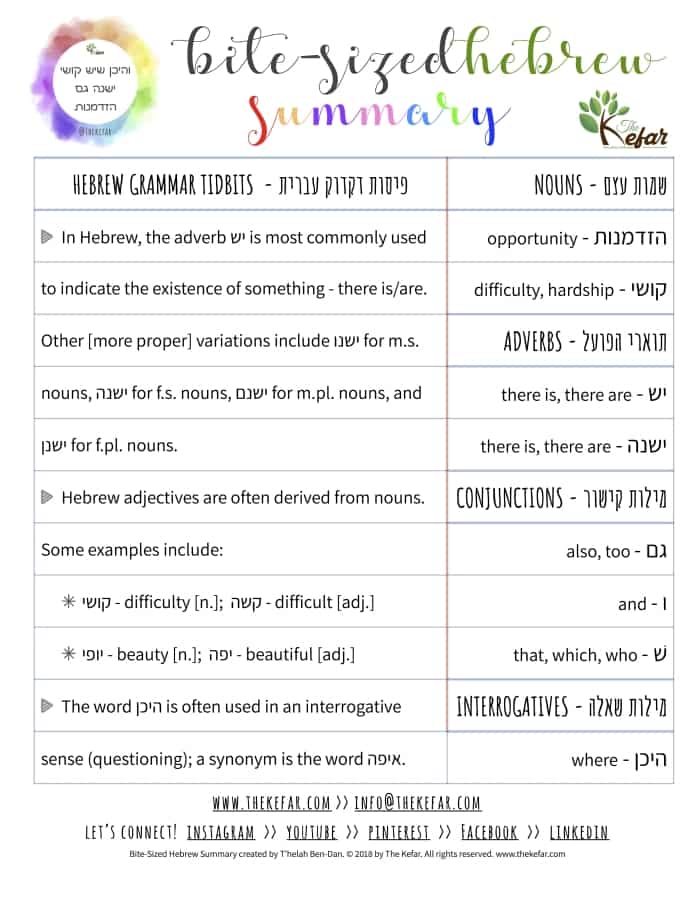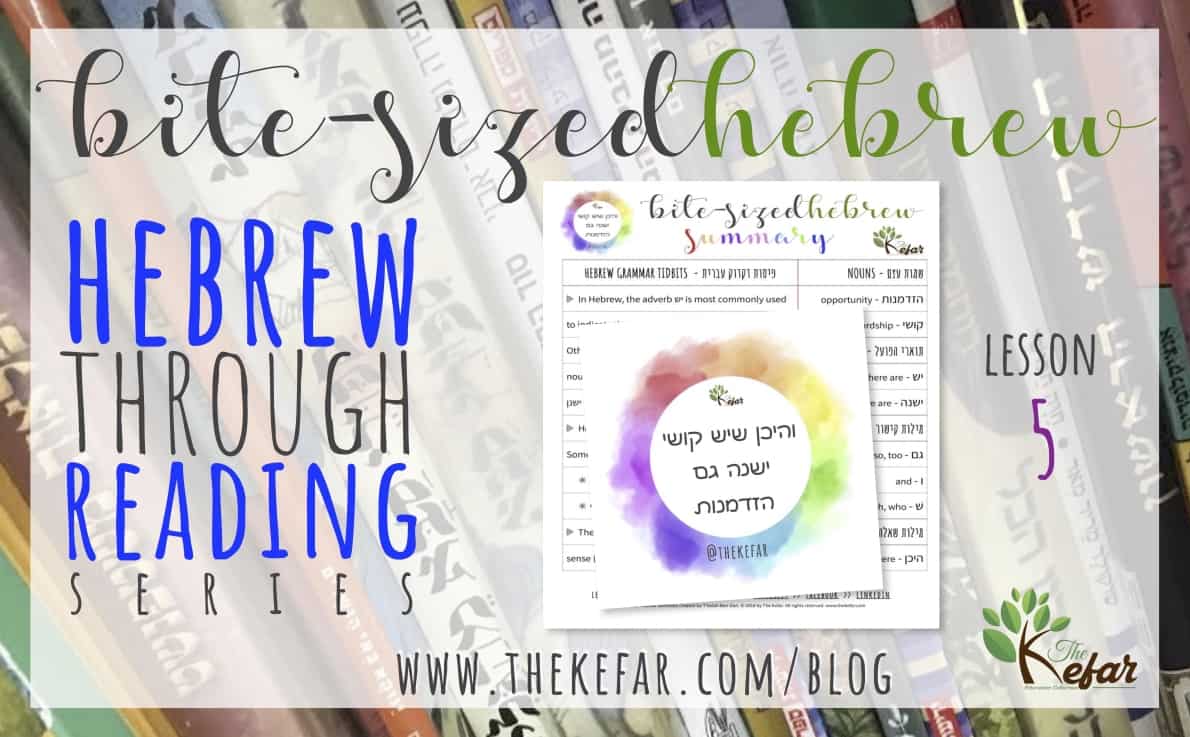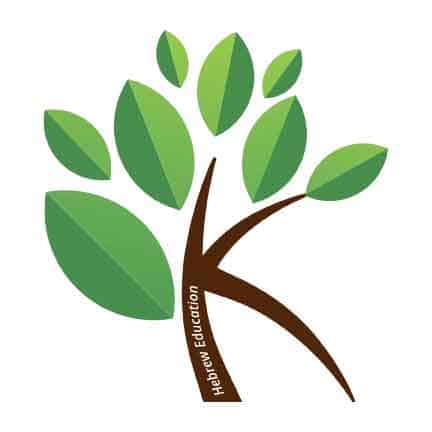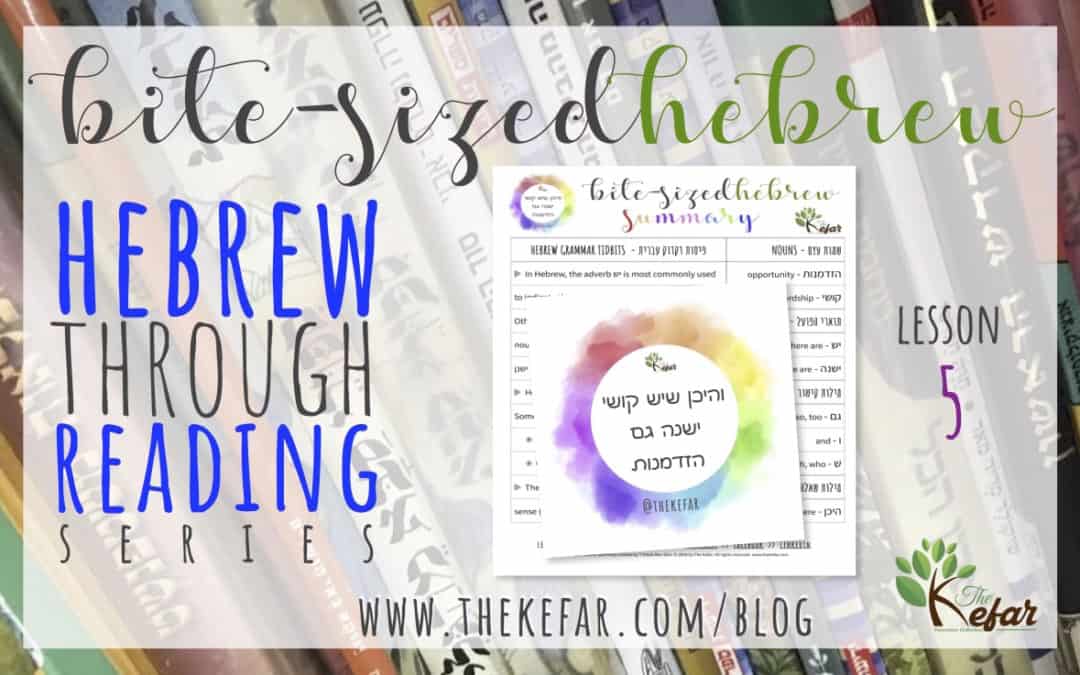This month’s Bite-Sized Hebrew Lesson is a bit later than usual, but don’t worry, I promise I haven’t forgotten about you. I’ve been busy with teaching Hebrew full-time at a charter school (which I LOVE), working on a NEW bilingual book I can’t wait to publish, and then of course managing everything that is The Kefar – including this blog, and these lessons!
This Lesson #5 is part of my monthly Hebrew Through Reading (HTR) series. (In case you missed the first several, you can read lessons one, two, three, and four here.) As usual, we’ll translate a quote word by word, phrase by phrase, using my four steps to improving Hebrew reading.

Listen to me read the quote here 3x
.וְהֵיכָן שֶׁיֵשׁ קוֹשִׁי יֶשְׁנָהּ גַּם הִזְדַּמְּנוּת
וְהֵיכָן [v’heichan] is a combination of the prefix וְ [ve’], and the question word הֵיכָן [heichan]. You learned in Lesson 3 that ו is a conjunction that means and. The interrogative {fancy way of saying ‘question word’} היכן means where. Together, this means and where.
שֶׁיֵשׁ [sheyeish] is a combination of the prefix שֶׁ [she’], and the adverb יֵשׁ [yeish]. You learned in both Lesson 3 and Lesson 4 that שׁ is a conjunction that means that, which, or who. The adverb יש means there is, or there are; its opposite is אֵין [ein] (read more about this in Lesson 3).
So far, we have: And where that there is/are…. (We see here that which or who wouldn’t make sense; that also sounds a little weird here, but we’ll wait until we translated further to see if we can rework it somewhere else, or take it out entirely.)
קוֹשִׁי [qoshi] is a masculine noun that means difficulty or hardship. From this noun, we get the adjective קָשֶׁה [qasheh], meaning hard or difficult.
This gives us: And where that there is difficulty…. (Difficulty is singular, so we know to use there is instead of there are. We’re still holding out to see what to do with the awkward that.)
יֶשְׁנָהּ [yeshnah] is a form of the adverb יֵשׁ [yeish]; it means there is or there are, specifically in reference to a singular, feminine noun. Other forms are יֶשְׁנוֹ [yeshno] (singular masculine); יֶשְׁנָם [yeshnam] (plural masculine); and יֶשְׁנָן [yeshnan] (plural feminine).
גַּם [gam] is a conjunction that means also or too.
הִזְדָּמְּנוּת [hizdamnut] is a feminine noun that means opportunity. This is the singular feminine noun that the adverb ישנה was referring to.
Putting this all together, we have “And where that there is difficulty, there is also opportunity.” Now that we’ve translated the entire quote, we see that the extra that can be removed; it’s necessary in Hebrew, but in the English it makes for clunky phrasing.
Our final translation is…
AND WHERE THERE IS DIFFICULTY, THERE IS ALSO OPPORTUNITY.
Be sure to pin the Bite-Sized Hebrew Lesson summary below so you can always refer back to it.
Please leave your feedback in the comments below!!
Until next time!
-T’helah 💙

👇🏾 PIN THIS PIC 👇🏾


